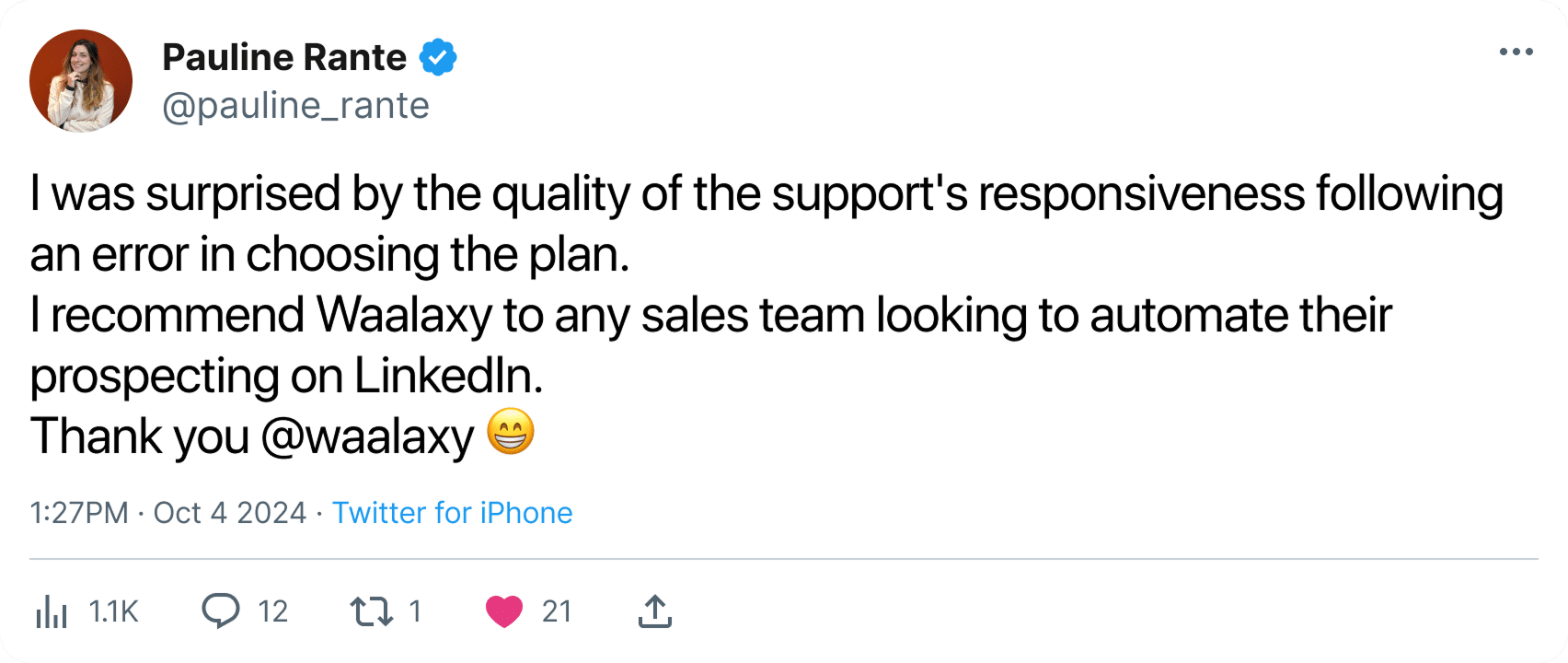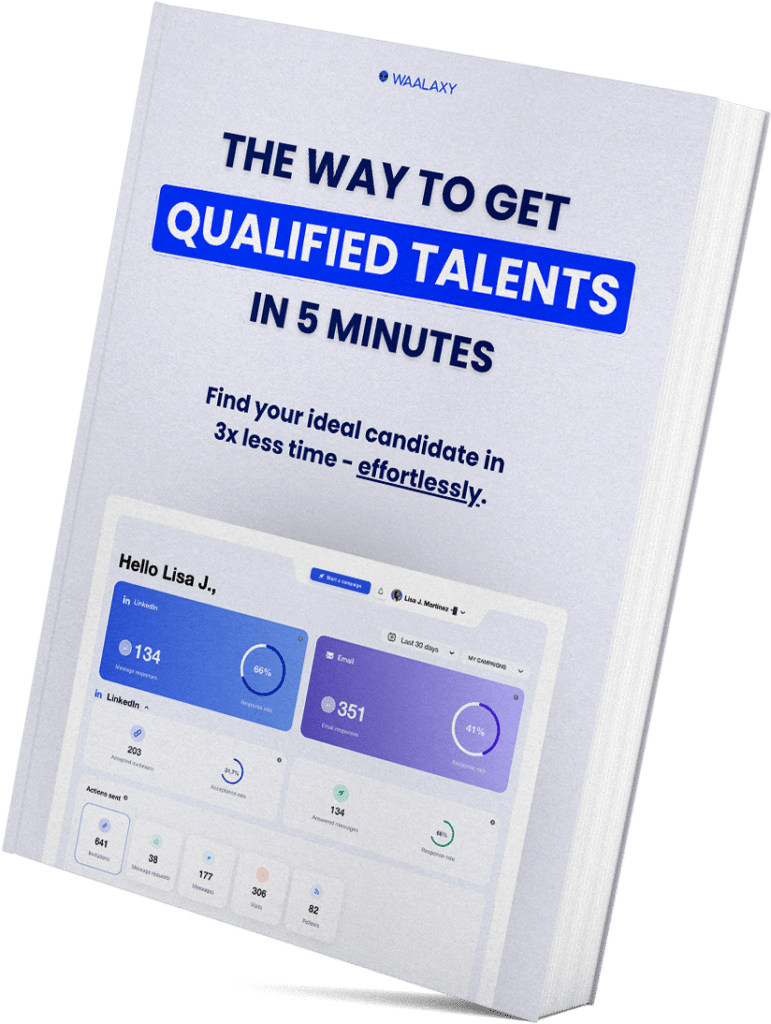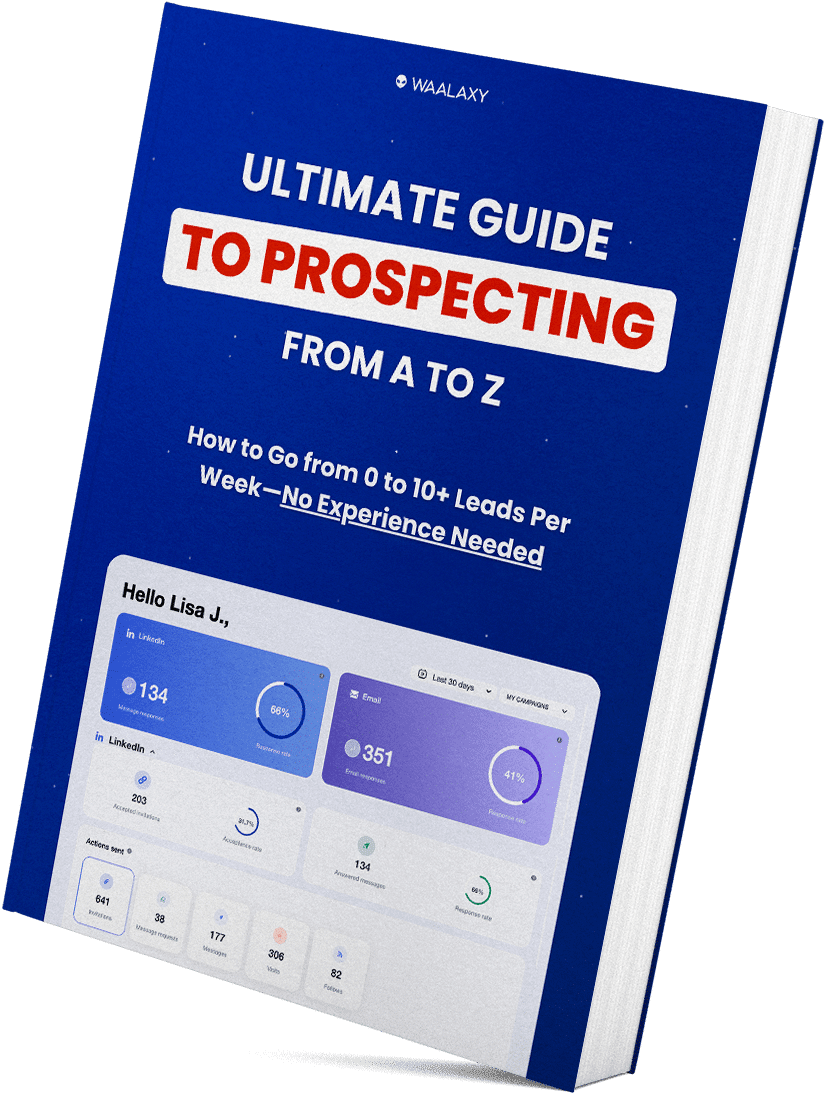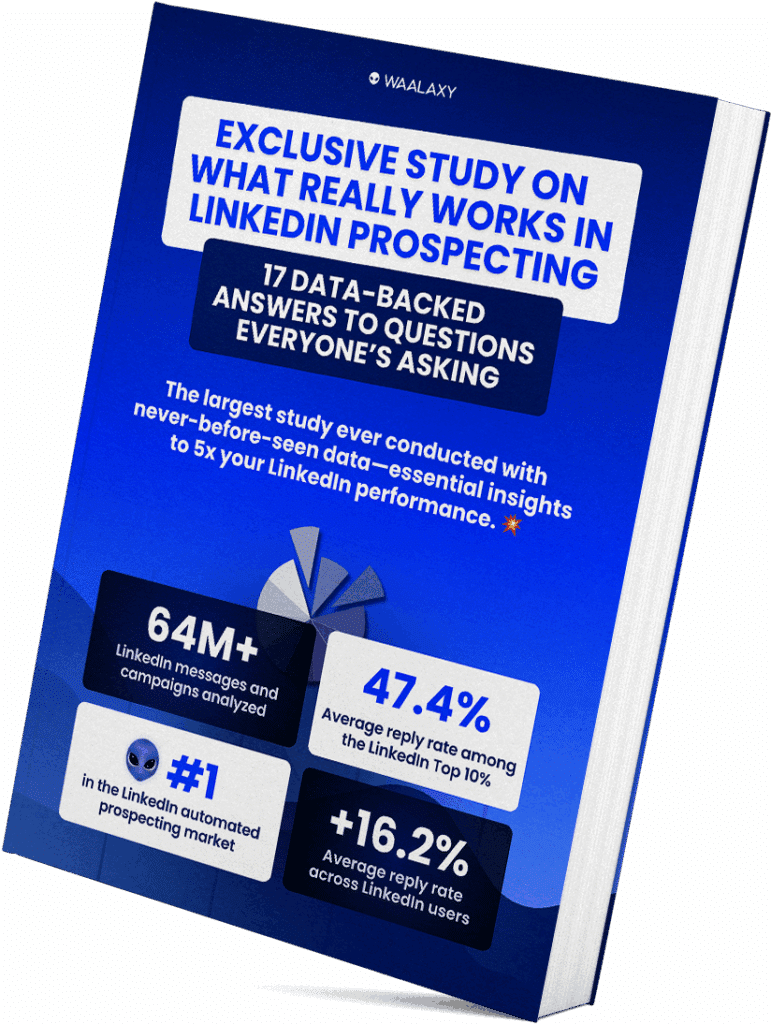Customer segmentation. That’s the keyword that can transform your entire marketing strategy. 👀
Talk the same way to a CEO, a craftsman or a student? Spoiler alert: it doesn’t work. ❌
And that’s exactly where customer segmentation comes in. It allows you to better understand your customers, personalize your pitch and, above all, propose the right offer, at the right time, to the right person. 😇
In this article, we break it all down for you:
- Definition.
- Models.
- Examples.
- Tips.
Ready to get inside your customers’ brains? 😉 (Reading time: 4 minutes).
What is customer segmentation?
Customer segmentation (or client segmentation for those in the know), involves dividing your customer portfolio into groups, according to precise criteria (more on this below), such as:
- Behavior.
- Socio-demographic characteristics.
- Needs.
- Values.
- Etc.
Each customer segment shares common features that enable us to better understand their expectations, buying habits and conversion levers.
This approach enables you to adapt your marketing campaigns, sales offers and, above all, your customer relations.
What’s the practical point of customer segmentation?
Customer segmentation enables you to :
- Prioritize marketing efforts on the most profitable segments.
- Know your customers better to anticipate their expectations.
- Optimize your campaigns.
- Define personalized customer paths.
- Build loyalty more effectively.
In short, there’s no need to talk about it for hours, you’ve understood: it’s your best ally if you want to make a success of your marketing strategy. 🚀
Let’s take a closer look at the different types. 🔎
The different types of customer segmentation
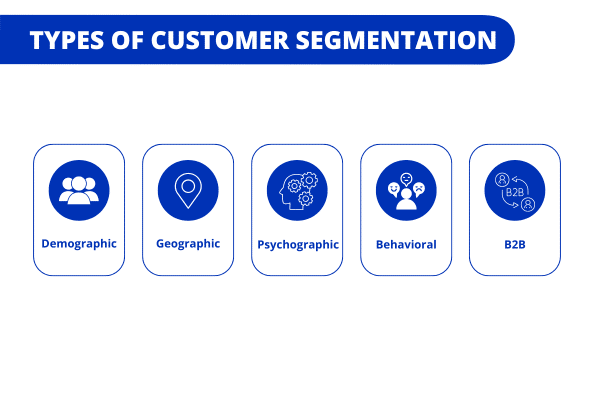
1. Demographic segmentation
We start with the most classic, but one of the most effective. It includes fairly basic criteria that will help you to better understand who your customers are. 🥸
Among others, you have :
- 🔵 Age (young adult, senior, etc.).
- 🔵 Gender (male, female, non-binary).
- 🔵 Marital status (single, couple, with children).
- 🔵 Education level.
- 🔵 Income.
- 🔵 Professional occupation.
- 🔵 Religion or ethnic origin (depending on cultural context).
This data enables an e-commerce site, for example, to offer products tailored to specific age groups, or a cosmetics company to adapt its tone and visuals to the targeted gender. 🖼️
It’s a particularly useful segmentation in B2C sectors such as fashion, insurance, banking or mass retail.
Basically, it’s ideal if you want to reach a large volume of customers with targeted messages. 🎯
2. Geographical segmentation
As the name suggests, here it’s all about the customer’s geographic location.
This can be done on several levels:
- Country.
- Region.
- City.
- Zip code.
- Climate.
- Urban density.
Why is it relevant? 🤔
Well, your customers don’t all have the same needs. A customer in France won’t necessarily have the same needs as one based in the United States. Climate, local habits can play into their needs. 👀
You can also use this method in e-commerce, with adapted shipping costs.
You can also use it in B2B, adapting the commercial offer to the local economy.
3. Psychographic segmentation
Okay, now we’re getting inside the customer’s head. 🤯
This segmentation is based on 5 aspects:
- Values.
- Personality.
- Interests.
- Lifestyle.
- Opinions.
Here, the aim is to create an emotional bond with your audience.
For example, an eco-responsible brand will appeal to customers who are sensitive to environmental issues. It will therefore be able to adapt its messages to create a sense of belonging. 💙
Often used in: 👇🏼
- Branding campaigns.
- Content strategies.
- Influencer marketing.
- Personalized offers.
⚠️ Beware, it’s more difficult to set up because the data is harder to obtain.
However, you can collect data using questionnaires, or engagement on social networks. 🫱🏽🫲🏼
4. Behavioral segmentation
This is surely the most action-oriented segmentation. 💥 It’s based on what your customer does:
- How often he buys.
- How often.
- What’s his average shopping basket.
- Which products they prefer.
- How they interact with your brand (email opens, clicks, site visits).
You’ll be able to use automatic reminders, product recommendations, upsells, targeted discounts and so on.
If you have an e-commerce site, you can identify customers who have abandoned their shopping cart for more than 3 days and send them a promo code to encourage them to finalize their order 😉
We advise you to use CRM and marketing automation tools to analyze these behaviors. 🛠️
This is also the basis of the famous RFM segmentation (we talk about it further down the article). 👀
5. B2B segmentation
In B2B, we don’t address individuals but companies. But that doesn’t mean you can’t segment!
Quite the contrary, and that’s what we’re going to see right now. 🔎
The criteria are : ⬇️
- Company size(VSE, SME, large accounts).
- Business sector.
- Location.
- Sales figures.
- Position and decision-making power of the contact.
- Specific needs according to growth stage.
For example, a SaaS will offer a monthly subscription with no commitment for small structures, and an annual contract with advanced options for large companies.
Basically, it allows you to optimize your sales tunnel and personalize sales proposals according to the prospect.
How do you segment your customers (even if you don’t have 50,000 contacts)?
1. Collect the right data
Segmentation always starts with an observation phase. 🔎
You can’t create relevant segments without knowing your customers.
You don’t need to have a wealth of data like Amazon: start with what you’ve got 😉
Here are the 4 essential types of data to collect (and how to get them):
1️⃣ Personal / CRM data.
- First name, last name, company, email, telephone.
- Sector of activity, position, company size.
Where to find them: via your contact forms, newsletters, CRM (Hubspot, Pipedrive).
2️⃣ Purchasing behavior.
- Date of last purchase.
- Frequency of purchases.
- Average amount spent.
Where to find them: e-commerce platform, invoices, analysis tools.
3️⃣ Digital behavior.
- Pages consulted.
- Clicks in your e-mails.
- Time spent on site.
Where to find them: Google Analytics, emailing tools, tracking pixels.
4️⃣ Declarative data.
- Questionnaire results.
- Declared preferences (themes, preferred format, frequency of contact).
Where to find them: surveys, post-purchase forms, pop-ups.
You see? Even with a modest base, you already have something to segment. 😏
2. Choose your customer segmentation criteria
Collecting data is all very well. But you still need to know what to do with it. 😅
Customer segmentation criteria are the filters you’ll apply to form your groups! 🏘️
Here are the main types of criteria to consider. 👇🏼
1️⃣ Demographic or firmographic criteria (especially useful in B2B or e-commerce).
- Age, gender, location, company size, sales.
- Example: create an offer dedicated to very small businesses in the tech sector.
2️⃣ Behavioral criteria (these are the most actionable).
- Active vs. inactive customers.
- New customers (<30 days).
- High-frequency customers.
- Cart abandonment.
3️⃣ Value criteria (ideal for prioritizing your efforts).
- High-potential customers (high basket, good engagement).
- Customers who generate little revenue, but recommend a lot.
4️⃣ Psychographic criteria (if you have more in-depth data).
- Interests, values, lifestyle.
- Example: proposing an ecological message to an engaged segment.
Always ask yourself this question: “Does this criterion help me adapt my message or my offer?” If so, keep it.
Finally, a word of advice: there’s no point in using all segments at once. It’s better to do less but better, than too much but not enough. 😇
3. Create your customer segments
You’ve got your data, you’ve chosen your criteria, now let’s get on with creating customer segments!
As a reminder, a customer segment is a group of customers with similar behaviors or characteristics, on which you’ll be able to apply your personalized strategy.
You know the expression “putting all your eggs in one basket”? Well, that’s what we’re going to do. 🐣
Let’s look at some examples: ⬇️
- VIP customer ⭢ average basket over €300, high purchase frequency.
- New customers ⭢ registered for less than 30 days.
- Dormant customers ⭢ no purchases or interaction for 6 months.
- Active fans ⭢ click through emails, leave reviews, share on LinkedIn.
- Abandoned cart ⭢ viewed several pages but not converted.
Remember, each segment must respond to a marketing intention, like :
- I want to retain them ⭢ “new customers” segment.
- I want to reactivate ⭢ “dormant” segment.
- I want to transform faster ⭢ “active fans” segment.
Finally, we recommend a few tools to help you segment quickly and simply:
- CRM / Emailing: Hubspot, Waalaxy, Brevo.
- Data / Analysis: Google Data Studio, Power BI.
- Excel or Google Sheets (good luck, it’s long 😅).
Give each segment a name and an index card, to help you visualize them.
📊 4. Measure and adjust
Customer segmentation should never be static. It evolves as your customers evolve. 🗿
Yes, implementing a segmentation strategy also means agreeing to test it, reiterate it, even break it in order to start all over again… 🔨
Okay, but what do we need to analyze? 🤔
Well, it’s simple:
- Engagement rate ⭢ opens, clicks, read time.
- Conversion rate ⭢ who actually buys after your actions?
- Sales by segment ⭢ are VIPs always the ones who earn the most?
- Cost of acquisition ⭢ sometimes, small buyers are cheaper to convert than big ones.
The golden rule: each segment must be used to move you to action.
RFM segmentation: an essential model
We were talking about it earlier, RFM segmentation is a method for identifying your high-potential customers, and those to re-engage quickly. 🔥
What exactly is RFM?
RFM stands for :
- Recency ⭢ when was the last purchase or interaction?
- Frequency ⭢ how often does the customer interact or buy?
- Amount ⭢ how much does he spend on average?
Why is it useful? 🤔
Because you’ll be able to classify your base into 4 or 5 strategic segments (as seen above).
RFM stands for :
- Recency: when was the last purchase or interaction?
- Frequency: how often does the customer interact or buy?
- Amount: how much do they spend on average?
This model helps you answer a crucial question: who are my best customers?
Some CRMs allow you to add a “RFM score” that updates with each purchase.
Customer segmentation in the Business Model Canvas
Why are we talking about the Business Model Canvas here? Well, it’s a visual tool for structuring your business model.
And do you know what the very first block to fill is? 🥁
Customer segments! Because it’s all about them 😉
Until you know who you’re talking to, you can’t know :
- Your value proposition.
- Your distribution channels.
- Your revenue sources.
- Or your actions.
How do you fill in a Business Model Canvas?
First, ask yourself the following questions: 👇🏼
- What are the typical profiles I want to reach?
- What are their problems/needs?
- What makes them different?
- Do I have different types of customers?
For example, an HR management SaaS app might have :
- 🥇 Very small businesses looking for simplicity.
- 🥈 SMEs looking for automation.
- 🥉 Large companies looking for customization and support.
In short, as you can see, these customer segments will influence your price, your type of customer relationship and, above all, the features you choose.
How about a quick recap?
Okay, imagine yourself running a small business. You’re selling top-notch products, but your business is stagnating. Then, one day, you say to yourself: 👇🏼
“What if I talked to my customers differently?”
So you start observing them. You segment. You test. You understand. And then, BANG. Your AC starts up again. 💥
That’s the power of customer segmentation.
It’s not just another marketing technique. It’s the trigger for a personalized, human and profitable strategy. 😇
So, are you ready to take action? 🚀
Frequently asked questions
What are the 4 types of segmentation?
There are 4 types of segmentation:
- 1️⃣ Demographic.
- 2️⃣ Geographic.
- 3️⃣ Psychographic.
- 4️⃣ Behavioral.
These 4 main types allow you to create a tailor-made segmentation, according to your marketing needs. 💜
What is consumer segmentation?
Consumer segmentation is simply customer segmentation in the B2C market.
Consumers are segmented according to their behavior, purchasing habits or personal data.
As you can see, customer segmentation is not an option. It’s mandatory if you want your marketing strategy to succeed. 🫱🏽🫲🏼


